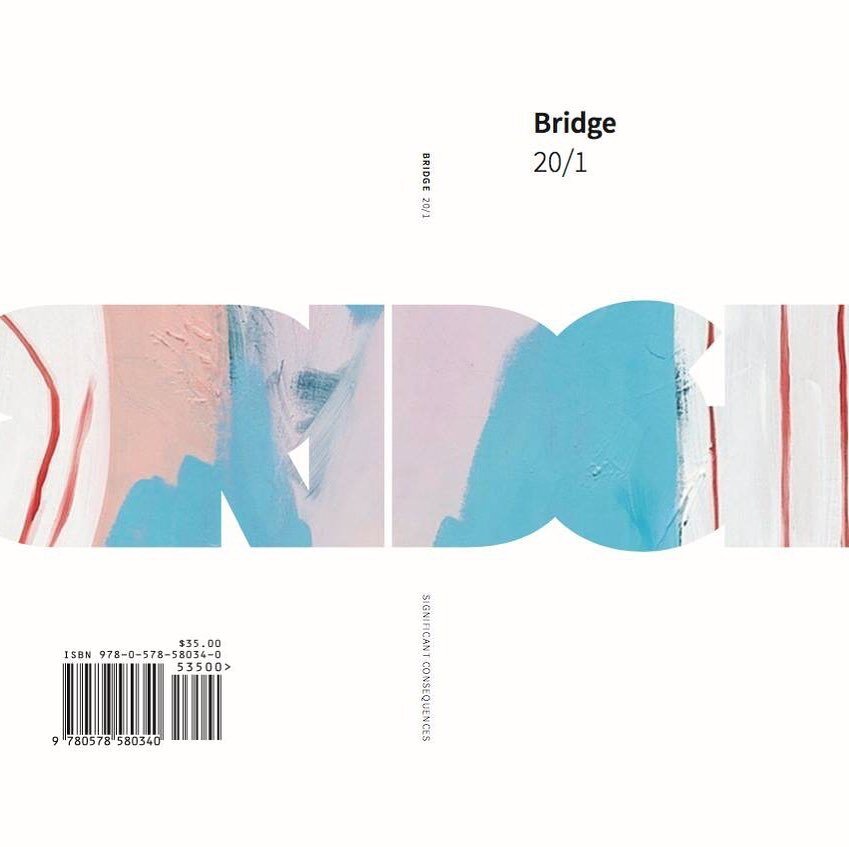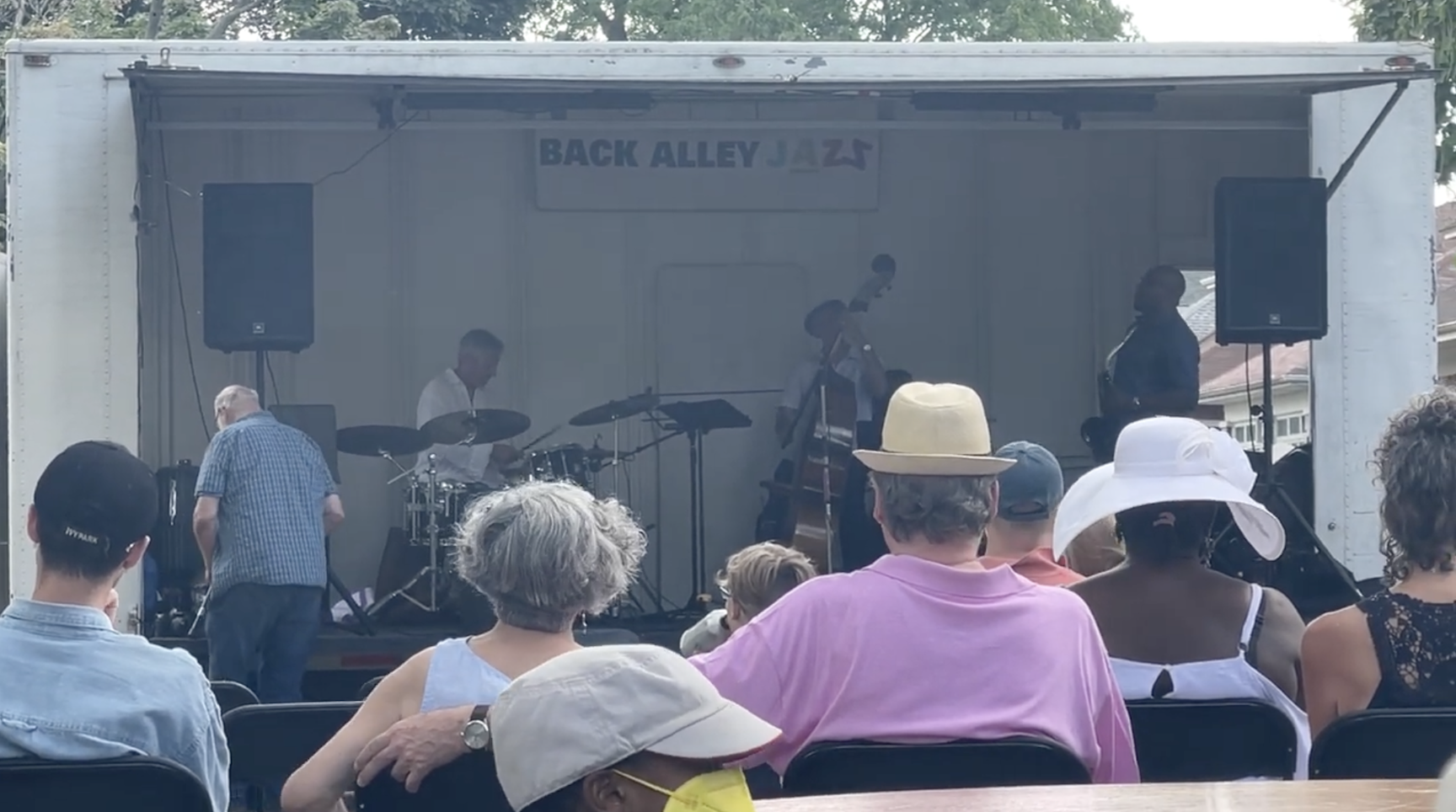REPORT: Back Alley Jazz 2022
Entry View, Paxton Ave. north side entrance to Back Alley Jazz, 2022. Photo by Michael Workman.
REPORT
Back Alley Jazz
7200 & 7300 blocks of S. Paxton Ave.,
7400 block of S. Oglesby Ave.
& at The Quarry, 2423 E. 75th St.
Saturday, Aug. 26, 2022
By Michael Workman
It’s a sweltering day in Chicago’s South Shore neighborhood, the mercury topping 95 degrees, and I’m walking with my son Tristan along the sparsely tree-lined street of Paxton Avenue, where the event is situated on Paxton and Oglesby Avenues, centered at 73rd and Paxton with a mobile stage. We’ve arrived just in time for the procession which opens each edition of the annual event, sponsored by Hyde Park Jazz and co-produced by residents Gail Mangrum and Zenja Vaughn, Jeannine “Katie” Sharpe, her sister, Jonita, and emceed by the delightful Maggie Brown. As the procession advances down the block to the stage, Mangrum dashes by, greets us and says “trying to deal with these food trucks,” and dashes down the block to the arriving trucks.
Back Alley Jazz Procession and opening "Sinte" performance by the African Dance and Music Institute. Sinte are protection initiation dances originated out of Guinea, West Africa, to protect young men in the transition to adulthood.
Founded on the “jazz alley jams” that were once a Chicago institution on the city’s south side neighborhoods, this year’s iteration of the South Shore neighborhood’s Back Alley Jazz was the fifth since its relaunch in 2018 by blkHaUS design studio co-founders Norman Tegaue and Fo Wilson. For those not familiar with the history of the event, Back Alley Jazz is an attempt to recapture the tradition of alley jams dating back to the mid-1960s begun by Arthur “Pops” Simpson when he started playing records out of his three car garage at 50th and South Champlain. Neighbors eventually ventured over to join in on the music and the event grew in scale to a Sunday after-church fixture in the neighborhood. There’s a thorough account of its relaunch in a Lisagor-award finalist article over at South Side Weekly here, which includes a brief interview with Jimmy Ellis, grand Marshall of the 2018 iteration and the first to bring live music to the jazz alley jams that preceded it.
Teague’s approach, rooted in projects and pedagogy that address the systematic complexity of urbanism and the culture of communities, was particularly focused on how the event was founded in thinking about architecture and music. As Teague remarked in his 2021 Wallpaper magazine interview, Back Alley Jazz and other community initiatives such as his Tilden Career Community Academy incubator program, are intended to harness the capacity of thinkers to “influence design, urban planning and architecture across their communities.”
Tommy Bradford Band at Back Alley Jazz 2022, with Larry Beers on drums, and Dexter Sims on bass. Video copyright Michael Workman 2022.
It’s a program with even further, yet-unrealized liberationist promise that Chicagoans should be encouraged to foster. As Douglas Ewart, an original jazz alley jams musician interviewed for the Smart Museum’s 2018 exhibit The Time Is Now! Art Worlds of Chicago’s South Side, 1960–1980 put it: “And when you think about the compartmentalization of Chicago politically, the intersection of various ethnicities — and particularly Black and white people coming together — that was a no-no in Chicago, whether unstated or stated.” Part of the reason Fred Hampton was assassinated, of course, was because he attempted to bring together a “rainbow coalition” across race, ethnicities, class and various other social disparities to agitate for a more perfect realization of a long-sought after ideal of a “beloved community.” (And, some argue, laid the foundation for the coalition that helped Barack Obama later ascend to the office of the Presidency).
Regardless, in a microcosm, that’s what Back Alley Jazz today is seeking to provide, and attendance this year seems to have held up, despite the powerful heat indexes. Partly also likely because of the at-first weekly, then monthly gatherings for the Ladies and Gentlemen of jazz at the Bassline club in the city’s Motor Row neighborhood (so-called for the sprawling automobile showrooms that helped launch America’s love affair with the automobile). Afterward, in the vinyl era, it became the home of the famed Record Row, with dozens of labels setting up shop including Chess, King, Vee Jay, One-der-ful, OKeh and others, establishing a vanguard for jazz and blues music on the South Loop strip.
I attended nearly every single event for the mostly under-the-radar event where, as Mangrum would laugh and describe it, “the youngest attendee is probably 72.” Veritable libraries worth of music history got together over this last season of DJ afternoons at Bassline, and entire volumes of the past transforming into a newly-minted present seemed to come with them. This gathering of musicians, jazz alley lovers, card-players and just plain old music lovers brought together the grit of the original jazz alley jams to the sounds of DJs Brother Bill, Sweet Emma, Max, Lil Mike, and JT the Groove Man — and were known to get people on their feet and moving.
Video of a dancing couple at the monthly Ladies and Gentlemen of Jazz hangout event at Bassline Club in Chicago's Motor Row neighborhood.
I hope they continue, as I hope South Shore’s Back Alley Jazz continues, despite the struggles of putting on these events – given the long dream of founding a space where all peoples and all cultures are welcome to experience the passing along of these long traditions of a jazz and blues experience on the precipice, but for a new generation that will not let it be forgotten.
More info on Back Alley Jazz, along with archival material tracking the relaunch editions from the past five years, can be found on their site.
Like what you’re reading? Consider donating a few dollars to our writer’s fund and help us keep publishing every Monday.






